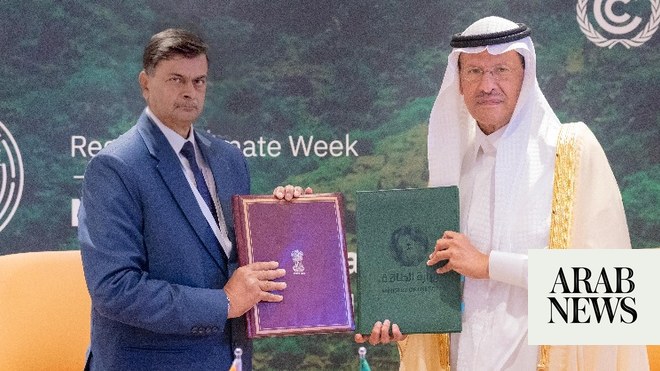
— The renewable energy sector is gradually booming with new innovations bringing down the costs and companies beginning to deliver on the promise of a clean energy future. The government seems to be on course to raising its renewable energy capacity from the current 100 GW to the targeted 500 GW by the year 2030.
While a number of nations made similar commitments at the Paris Climate Convention in 2015, India is one of the few countries in the world that not only met its targets but also exceeded them.
Though similar processes that took place earlier could not successfully integrate the energy sector without compromising upon reliability, the same is happening with ease now. Therefore, this gives governments a chance to reduce their carbon emissions, gradually displacing and replacing dirty fossil fuels from the power sector entirely.
The Indian government, especially since the year 2014, has embarked on a mission to meet the energy needs of the future and to keep the environment safe. The Indian government has undertaking a number of schemes and missions.
In order to take that further, the government has approved Phase 2 of the Inter-State Transmission System — Green Energy Corridor recently. The program shall assist in meeting the goal of 450 GW of installed renewable energy, thereby providing energy security and sustainability in the long run. This corridor shall smoothly integrate multiple state grids like Gujarat, Himachal Pradesh, Karnataka, Kerala, Rajasthan, Tamil Nadu and Uttar Pradesh as well.
A Memorandum of Understanding between India and Nepal has also been signed recently aimed at constructing a bridge over the Mahakali River in Dharchula. Strengthening the existing diplomatic ties between the two countries, the bridge would benefit people on both sides of the border further strengthening the special link and strong people-to-people connect that exists.
The aforementioned two developments come close on the heels of the Union Budget 2022 announcement wherein the allocation of Rs.19,500 crore was made so as to boost manufacturing of solar modules under the government’s flagship Production-Linked Incentive (PLI) scheme.
This humongous allocation has been done keeping in mind the fact that India’s energy sector is expected to double in the next 20 years and denying people this energy would be similar to/equivalent of denying life to millions of individuals.
While a number of countries have been able to install a number of renewable energy capacity machinery, the real challenge lies in obtaining actual energy generation from these units.
In any developing country, the demand is much more during the evening hours whereas solar energy can mostly be utilized only during the day. Therefore, the need of the hour is to balance the combination of energy efficiency, demands in management and shifting load from evening to daytime.
India has started off on a firm footing already. In fact, while the world is still grappling with the idea, India has already put forth its vision of exporting green energy. Announcing a slew of measures, India is now in the process of strategizing on different ways of boosting employment opportunities within the sector.
As part of the latest draft policy framework from the Ministry of New and Renewable Energy, the emphasis is given on promoting decentralized renewable energy in livelihood applications.
In an unusual yet innovative idea, Bihar has announced the commissioning of the first floating power plant, which shall meet two goals at a time: (a.) producing green energy from solar panels and (b.) promoting fish farming underwater.
Additionally, an online ‘green’ job portal connecting empaneled enterprises with professionals hunting for jobs in the renewable energy sector has been unveiled recently, with the potential to create about 34 lakh jobs and installing 238 GW solar and 101 GW wind capacity by 2030.
As has been rightly pointed out by multiple visionaries, energy transition has necessarily determined geopolitical transition as well. When wood was replaced by coal in the 18th Century (also known as the Industrial Revolution), Europe suddenly overtook India and China to emerge as the world leader.
Similarly, with the emergence of oil in 21st Century, United States and West Asia outgrew other countries. Such revolutions in the industry have necessarily disrupted the harmony between humans and nature.
Therefore, this urgency to become self-sufficient as well as a large exporter is not just about doing the right thing but to help India emerge as a global superpower as well. — Agencies










